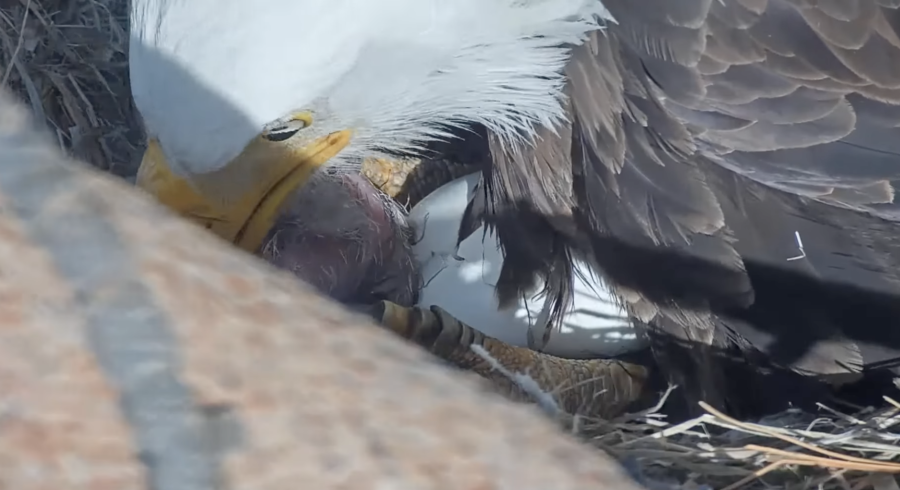Big Bear’s famed bald eagle pair Jackie and Shadow welcomed their first healthy chick in two years Thursday.
“Shadow was on the nest for the hatching, he is a proud daddy!” read a Thursday post on the Facebook page of Friends of Big Bear Valley, which runs a popular web camera that monitors the bald eagle couple’s nest 24 hours a day.
The eagle could be seen perched on top of the hatching egg as the eaglet cracked through. A second egg remains unhatched.
Jackie laid her first egg of the year on Jan. 22, and the second egg on Jan. 25.

Bald eagle eggs usually take about 35 days to incubate. But because the species generally doesn’t begin incubation until the last of the eggs has arrived and the clutch is full, the first egg usually hatches around day 38 or 39, according to Friends of Big Bear Valley. The second egg takes a day or two after that.
You can follow along with pip watch — the beginning stages of an eaglet’s birth — and catch the second egg hatching by watching the livestream of Jackie and Shadow’s nest here.
Recent video from the nest camera shows Jackie and Shadow have been carefully tending their nest in preparation for the eaglets, especially as winter weather rolled into Big Bear.
Fans are hoping for a happy outcome this time around for the mating pair, who haven’t experienced a successful hatching since 2019.
The past couple of years have been particularly difficult, with all seven of their eggs failing to hatch — including two destroyed by ravens swooping in to the nest while Jackie and Shadow were both briefly away. And during a hatching last year, the baby bald eagle inside suddenly died after its first chirps were heard.
“Sometimes nature is hard to watch, especially when there is an unexpected turn of events that we do not understand,” Friends of Big Bear Valley said at the time.




















